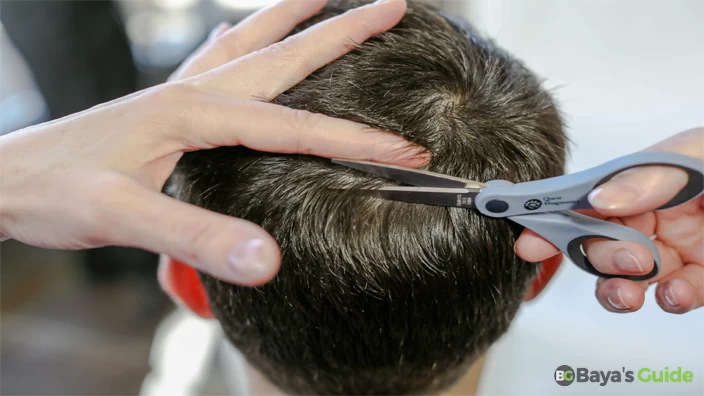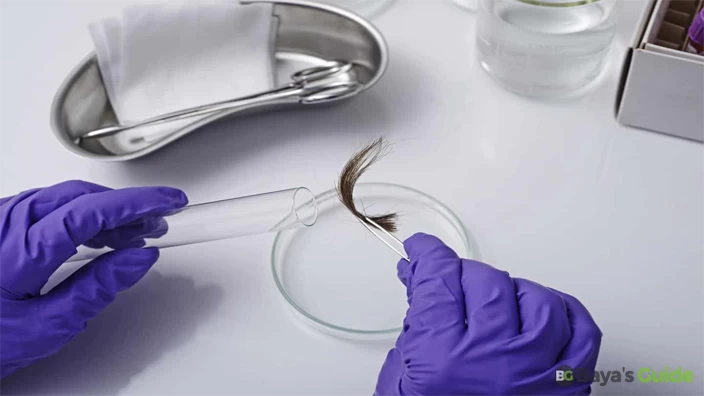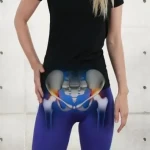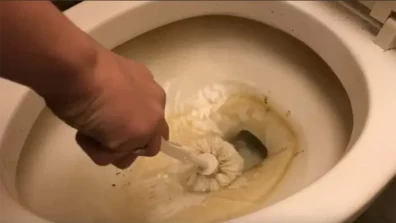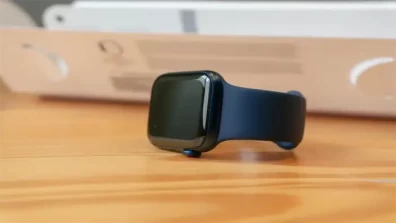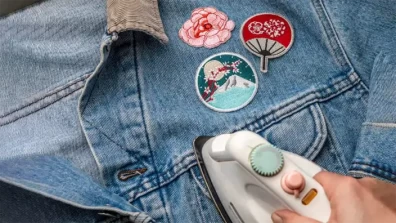Truck drivers often find themselves subjected to rigorous drug testing, including the challenging hair follicle test. Unlike urine or saliva tests, a hair follicle test can trace drug use over a more extended period, posing a greater challenge for those looking to pass. It is an essential part of DOT launched by the Consortium Pool to test hair follicle drugs. The Consortium Pool provides services of alcohol testing and compliant drugs to ensure that the truck driver is not a drug addict or alcoholic abuser and also authorizes the CDL license to the employees.
Predominantly, a hair follicle test is a roadblock that stops insane and unhealthy people from on the roads and also grants permission to truck drivers to get the job without having legal issues. Most often new vehicle drivers get confused and worried about follicle drug testing as they have the least information about the ins and outs of drug and alcohol testing. Fret not! If you're a truck driver facing a hair follicle test, here are some tips to help you navigate the process.
Table of Contents
- When Is Drug Testing Conducted?
- Which Drugs Are Screened In Drug Tests?
- Drugs Rarely Screened In Hair Tests
- Understanding The Hair Follicle Test
- How Does Hair Follicle Drug Testing Work?
- What Happens If Drugs Are Found In Your Hair?
- How Much Hair Is Needed For A Hair Drug Test?
- Frequently Asked Questions
- Conclusion
When Is Drug Testing Conducted?
The demand and regulations for drug testing vary across countries and states, especially for entry-level jobs. In the United States, testing procedures are regulated by the Mental Health Services Administration (SAMHSA). In most states, drug testing reports may be required randomly during work or when there's suspicion of involvement in a workplace accident. Understanding the requirements and procedures is crucial before undergoing drug testing.
Which Drugs Are Screened In Drug Tests?
Drug testing is mandatory in the United States, even randomly during employment. SAMHSA testing focuses on five key drug classes:
- Amphetamines
- Cocaine (Powder or "crack" forms)
- Phencyclidine (angel dust or PCP)
- Opiates (opium, heroin, morphine, codeine)
- THC (marijuana, edible cannabis products such as hash)
- Alcohol
Drug tests vary based on the organization and context. Common substances screened in standard drug tests include:
- Marijuana (THC) - Detected in urine, blood, hair, and saliva.
- Cocaine - Cocaine and its metabolites are often part of drug screenings.
- Amphetamines - Encompasses drugs like methamphetamine and prescription medications like Adderall.
- Opiates - Commonly tested opioids include heroin, morphine, and codeine.
- Phencyclidine (PCP) - A hallucinogenic drug that may be included in some drug tests.
- Benzodiazepines - Prescription medications for anxiety or sleep disorders, are tested in certain situations.
- Barbiturates - A drug class that can be tested for, though less common than other substances.
Specific drugs screened can vary by test type (urine, blood, hair, or saliva) and the organization's requirements. Some tests may include expanded panels screening for a broader range of substances; always check test details for accuracy.
Drugs Rarely Screened In Hair Tests
Certain drugs are rarely tested in hair screenings due to their lower impact. These include:
- Hallucinogens - Psychedelic drugs like mescaline, LSD, mushrooms, and peyote. They lightly affect mental capabilities but significantly alter sensory perception.
- Inhalants - Found in glues, spray paints, cleaning fluids, and markers. Psychoactive but doesn't impair cognitive function when inhaled.
- Anabolic Steroids - Synthetic steroids affect the male sex hormone testosterone. Not typically tested for a truck driver's license, as they are mainly used in specific medical contexts for men.
- Hydrocodone/Oxycodone, Vicodin - Hydrocodone, is a semi-synthetic opium medicine used mainly for severe pain and coughs in adults. These substances are not commonly screened for in truck driver license tests.
Suggested Post: How To Tighten A Loose Tooth At Home
Understanding The Hair Follicle Test
Hair follicle tests are recommended and designed to detect drug use over an extended period, typically up to 90 days. The drug test analyzes a small sample of hair, usually taken from the back of the head, for traces of drug metabolites.
During the time you take drugs, their chemicals mix and circulate in your body through blood veins. The analysts say that these chemicals are accumulated in hair dandruff and hair follicles. A small amount of hair is sufficient to test the drug types you take in and further attest to your mental and physical health.
1- Cease Drug Use
If you wish to pass a hair follicle test straightforwardly, you must abstain from drug use. Mind it, the hair follicle test can detect substances that you have used in the past three months. So, stopping drug use well before the test provides the best chance of a negative result.
2- Hair Detox Shampoo
Specialized detox shampoos are available that claim to cleanse the hair of drug metabolites. While some users have reported its success, the efficacy of these products is debatable. Following the instructions carefully and using the shampoo as close to the test as possible is crucial.
3- Haircut Strategies
It's also spoken favorably that while shaving your head might seem like a foolproof solution, it raises suspicion and may result in a failed test. Instead, consider keeping your hair short, as the length of the sample required for testing is typically 1.5 inches. However, note that body hair may be tested if head hair is unavailable.
4- Maintain A Healthy Lifestyle
To qualify for the drug test for truck driving, you need to set a healthy lifestyle, including regular exercise and staying hydrated. It may contribute to the elimination of toxins from your body. However bear in mind, that relying solely on this method is not guaranteed to produce the desired results.
5- Legal Prescription Documentation
If you are taking prescription medications from some medical practitioner, you need to ensure to keep the necessary documentation to prove your legality. Furthermore, Provide this information to the testing facility before the test.
6- Know Your Rights
Before you get repudiation from your driving license, it’s better to familiarize yourself with your rights and the testing procedures. Be aware of the testing facility's practices and ask for clarification on any concerns you may have.
How Does Hair Follicle Drug Testing Work?
Don't brood! Hair follicle drug testing is not like walking on thin ice rather it’s simple and convenient. You need to visit a lab and give a bunch of hair grown 1 inch above your scalp as a sample, it will be tested in the lab to determine whether you have been indulged in any kind of drugs.
Now the question arises, how the drugs can be detected in your hair follicle? Well! The answer is that drugs cast a baneful impact as they contain heavy amounts of chemicals that infuse the blood and circulate in the whole body. Resultantly, the drugs are detected which are embedded in your hair and become a part of your body.
What Happens If Drugs Are Found In Your Hair?
It can be a great problematical issue if there are positive results are found in your hair drug test. Under the law of DOT and FMCSA standards, you may have to face severe circumstances. First, it will devastate your career, and secondly, you may go through some criminal charges for which either you’ll be behind bars or would have to pay heavy fines for it.
Thankfully, you will get a chance to return to duty for drug tests with the help of the Consortium Pool’s team. You will pass through the pre-employment drug screenings to meet the set standards of service drug and alcohol tests.
How Much Hair Is Needed For A Hair Drug Test?
If you are afraid of thinking that you will be bald provide your hair as a sample for a follicle drug test. No, it’s not. You need to send any hair from your head or body that is about one inch longer. The laboratory technician asks for 100 milligrams which are at the weightage of 90 to 120 strands of hair and puts them then under procedure.
Frequently Asked Questions
What If I Don't Have Any Hair?
Intrinsically, the hair is required for lab tests if they are from any part of the body. If your hair on the head is too short to be cut as an average of 1.5 inches and sent to the lab, you may take the substitutive hair from the leg, chest, or from armpit for testing requirements. But the tragedy lies when the driver doesn’t have sufficient hair even on the body, he may face a refusal from the company.
Do Hair Products Hinder The Hair Follicle Test?
Some hair products like hair styling cream, bleach, shampoos, or gel are thought to change the effect of drugs or alcohol on your hair but it’s not so. These hair products can make an outer layer over the cuticle to hide the drugs’ impact on your hair. But it’s temporary. The drug hair follicle test can detect, in any case, that you have taken the alcohol or drugs three months back.
Who Can See The Test Results?
Hair follicle test results are reported to the DOT confidentially as they are not permitted to post them for the public or share the report with other companies. The DOT (US Department of Transportation) is authorized to see, check, and scrutinize the report. On the other hand, it is reported and detailed on your DAC report if you fail to qualify for the test determined by the trucking company’s policy.
Which Is The Best Hair Follicle Detox?
As it is proven that no hair products are unsheltered the drug affects your hair follicle. Old Style Aloe Toxin Rid Shampoo also called the Nexxus Aloe Toxin Rid Shampoo is a great hair follicle detox product. Nexxus is the main element of this toxic shampoo that can eliminate the pharmacological effect that you have taken in the form of a drug or alcohol within a limited time.
What Can Mess Up A Hair Follicle Test?
Besides the fact that all hair products are knock-back while you are getting your hair follicle tests. The factors which are known to affect the results of hair drug tests include:
- Hair treatments or altering hair color products such as bleaching, straightening, dyeing, and perming your hair can lessen the impact of drugs on a hair drug test result.
- Hair tincture
- Non-availability of hair on the head and body
- Environmental factors
Conclusion
While passing a hair follicle test can be challenging, careful planning and adherence to best practices can increase your chances of a favorable outcome. Remember to consult with legal professionals if you have concerns about the testing process or if you need advice tailored to your specific situation. Ultimately, staying informed and taking proactive steps can help truck drivers navigate the complexities of hair follicle testing in their profession.

